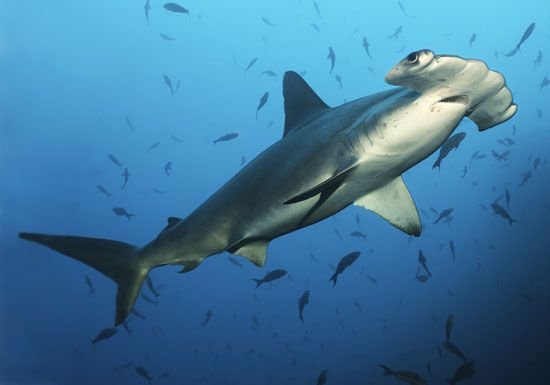
Imagine a hammerhead shark soaring through the ocean depths—its unique head helping it hunt and navigate. But just as a bird’s flight can be hindered by stormy weather or predators, so can the hammerhead’s life be disrupted by human activities and environmental changes. Here’s the thing: understanding these threats is the first step to helping these incredible animals thrive.
In this article, we’ll explore the common threats to hammerhead sharks in the wild, discussing everything from overfishing to habitat loss. Let’s dive in!
Overfishing: A Significant Threat
One of the most pressing dangers to hammerhead sharks is overfishing. Many species of hammerhead are targeted for their fins, which are highly sought after for shark fin soup, a delicacy in some cultures. This practice not only reduces populations drastically but also disrupts the entire marine food web. When you take a vital predator like the hammerhead out of the equation, it can create a ripple effect, harming other species and the ecosystem as a whole.
Commercial fishing often uses longlines and gillnets to catch a variety of fish, but these methods don’t discriminate. Hammerhead sharks can easily get entangled, leading to injury or death. Honestly, this isn’t just about the loss of individual sharks; it’s about losing an essential part of our oceans.
Habitat Loss: Destroying the Shark’s Home
Habitat loss is another serious challenge for hammerhead sharks. Coastal development and pollution are eroding the environments where these sharks thrive. Think about it—if a hammerhead shark’s nursery—where young sharks are born and raised—is disrupted by construction or contaminated by runoff, what chance do they have to survive?
Mangroves, seagrass beds, and coral reefs are crucial habitats for juvenile hammerheads. Yet, they’re often destroyed for urban development or agriculture. Without these safe havens, young sharks struggle to find food and evade predators. Protecting these habitats is vital for helping hammerhead populations recover.
Climate Change: The Ocean’s Unseen Enemy
Climate change is like a slow-moving storm that gradually alters the ocean’s landscape. As ocean temperatures rise, hammerhead sharks face multiple challenges. Warmer waters can lead to changes in prey availability, forcing sharks to swim further or adapt to new conditions that they’re not used to.
Moreover, increased carbon dioxide levels make oceans more acidic, which can harm crucial habitats like coral reefs. Did you know that coral reefs support about 25% of marine life? When these ecosystems suffer, so do the species that rely on them, including the hammerhead shark. It’s a complex web, and climate change is a major disruptor of that balance.
Pollution: A Silent Killer
Pollution is another significant threat to hammerhead sharks. Chemicals from agricultural runoff, plastics, and waste materials can enter the ocean, causing serious harm to marine life. This isn’t just a minor inconvenience; it’s a matter of life and death.
Sharks can ingest microplastics and other pollutants while they hunt, leading to health issues and even death. Additionally, toxins can accumulate in their bodies over time, potentially affecting their reproductive health. You might be wondering how this affects us—if hammerhead sharks suffer, it can disrupt entire food chains, impacting commercial fisheries and local communities.
Climate Change: Another Layer of Threat
While we just touched on how climate change affects water temperature and acidity, let’s dive a little deeper. Changes in ocean temperatures can shift the hammerhead’s migratory patterns and breeding cycles. They might find themselves in unfamiliar waters, leading to increased competition for food as they search for their preferred prey.
Furthermore, extreme weather events, like hurricanes, can cause destruction to coastal habitats that young hammerheads depend on for survival. As these storms become more frequent due to climate change, the future of hammerhead sharks becomes increasingly uncertain. Protecting their habitats and mitigating climate change is crucial for ensuring these magnificent creatures continue to roam the seas.
The Impact of Tourism: Balancing Opportunity and Threat
Tourism can have a double-edged sword effect on hammerhead sharks. On one hand, eco-tourism can raise awareness and funding for conservation efforts, helping to protect shark habitats. On the other hand, increased human activity in these areas can cause stress to sharks and disrupt their natural behaviors.
For example, dive excursions can introduce noise and disturbances, making it harder for hammerheads to hunt and breed. Responsible tourism practices are essential to minimize these negative impacts. It’s like a balance beam—if we tip too far towards exploitation, we risk undermining the very thing that draws people to these beautiful creatures.
Conservation Efforts: Protecting Hammerhead Sharks
Fortunately, there are many conservation efforts aimed at protecting hammerhead sharks. International organizations, local governments, and dedicated activists work tirelessly to enact policies that regulate fishing and protect habitats. Marine protected areas (MPAs) are one effective strategy, providing safe havens for sharks and other marine life to thrive away from human activities.
Supporting sustainable fishing practices and reducing plastic use can also make a big difference. Every small action counts. The more we spread awareness about the threats hammerhead sharks face, the better chance we have at ensuring their survival for future generations.
In conclusion, hammerhead sharks are incredible creatures that play a key role in our oceans. But they face numerous threats that can lead to their decline. By understanding these challenges, we can better advocate for their protection and preservation. So, the next time you hear about the plight of the hammerhead, remember—by standing up for these sharks, we’re also standing up for the health of our oceans.
